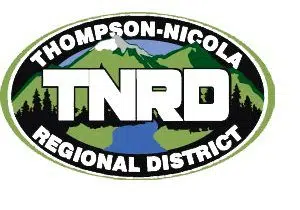
Photo of Kamloops in drought conditions in 2022 (Photo via James Smith/Alamy)
The City of Kamloops is looking at its options amid new analysis showing the city – and many parts of the province – are headed toward high to extreme drought conditions this Summer.
A new report going to council on Tuesday shows a high likelihood of Kamloops entering into extended periods of drought this summer.
“Analysis of previous droughts indicates that there are three major factors typically involved with drought occurrence—low winter snow accumulations, dry spring weather in May and June, and dry summer weather throughout July and August,” states the report heading to Council for review.
“The hot and dry spring of 2023 and low snowpack have elevated the concern for drought.”

Snow pack readings as of June 1/via City of Kamloops
The report suggests the current restrictions on lawn watering should be adequate in keeping water supplies in Kamloops at reasonable levels if the drought conditions don’t fall into the level 4 or 5 range – high and extreme.
However, the report warns that if Kamloops enters into those high to extreme drought conditions, further action may be needed.
Wightman says some of those options could include ban on non-commercial vehicle washing and pressure washing, as well as curtailing the use of water the city uses.
“Already our Parks staff are looking at ways that we could irrigation on City fields,” said Wightman. “Definitely at the lower levels, you can make that reduction without having to completely turn it off.”
However, Wightman does warn that more robust restrictions could be needed if Kamloops were to enter into a Level 5 drought situation.

Drought Level indicator/via City of Kamloops
“In the really extreme events, a level 5 drought where there’s a very likely impact to the environment, we may even be looking at things like a complete ban on irrigation. That’s something we’ve obviously faced in the city before.”
As for putting further restrictions on lawn watering, the report argues this would probably not help.
“One common method of increased water restrictions is to limit the number of allowable days of sprinkling,” notes the report. “The concern centres around an increase in maximum day demand, which is essentially a calculation of the total amount of water used on any given day. The concern is that by lessening the number of days properties are allowed to irrigate, people may choose to over irrigate on the days they are allowed to.”
This comes as the farmers who use the Noble Creek Irrigation System north of Westsyde see their water supplies potentially being cut-off as early as this week if the North Thompson River continues to drop.







